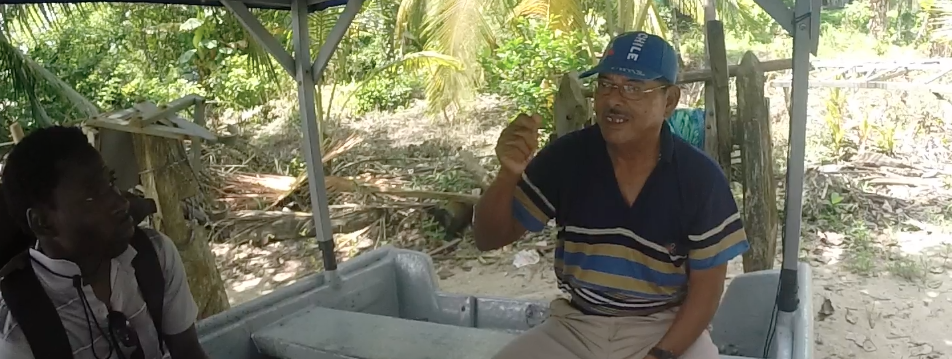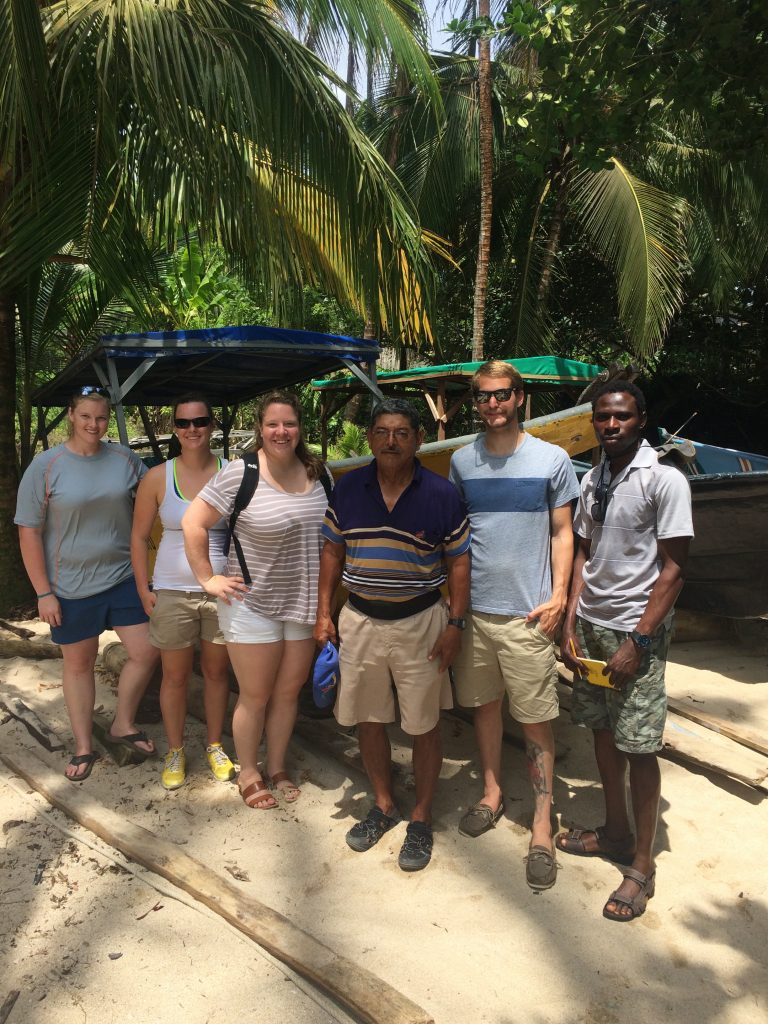On day six of the Costa Rica summer field school, participants continued to conduct an ethnographic survey of the town of Cahuita. To complement the boat recording, conversations with the captains are being held and documented. My team, which consisted of myself, Jeremy Borrelli, Wale Oyediran, Allyson Ropp, and Devin Urban, was fortunate enough to be the guinea pig team (absolutely no sarcasm intended; I love being the first to try something!). Fellow student Kelsey Dwyer served as our translator.
My team was tasked with speaking to Don Manuel Antonia Mayerena Morales, who is one of the two oldest fishermen in Cahuita and our head boat captain.
“I am happy to show people the sites, as long as they only look and take pictures. The tourists are good about not taking anything. Many Spanish tourists are really interested in the sites. They think they were Spanish ships carrying gold. I used to think the ships were Spanish pirate ships, but the British archaeologist said they were not Spanish. Now I do not know what they are.”
He is seventy years old, does not look a day over fifty-five, and has been a fisherman in Cahuita for forty years. Three of his five sons work with him as fishermen and the remaining two work in the tourism business. Don Manuel explained to us that the family unit is so important in Costa Rica, so sons typically feel the need to work for their father. Conveniently, this makes it easier for them to get the proper commercial fishing licenses from the government because they share the same last name.
Unlike many other fishermen in Cahuita, fishing was not passed down to Manuel. When he moved to Cahuita, he began to fish and realized he could make money doing it. In addition to fishing and working for the field school, Manuel is also regularly employed by the University of Costa Rica and the University of Cahuita. They conduct marine biology work within Cahuita National Park waters. They also measure the salinity and temperature of the water in order to monitor climate change.
In the 1970s, the government of Costa Rica declared that fishing was not allowed within the boundaries of the newly created Cahuita National Park. It took Don Manuel and his fellow fishermen four years to convince the Ministry of Culture that they should be allowed to fish in the park. New rules were created, such as the illegality of using harpoon guns and SCUBA gear; thus, fishermen can only use line or freedive to catch fish or lobster within the park boundaries. Rather than using a rod and reel, Don Manuel uses his hands to pull in the fish. When fishing for shark, he uses a thicker cord, so his hands are less likely to get hurt.
Out of his fleet of small fishing boats, Keyko, which means “beautiful” in Japanese, is Don Manuel’s favorite. He built it himself in 1994 and has not had to do any repair jobs since. There is an institution in Costa Rica called the INA that gives the plans for small fishing boats to fishermen. The INA possesses the original molds for all these boats. The fishermen can go to the nearest INA satellite office and make a fiberglass mold from the original. They then put on numerous, alternating layers of resin and fiberglass over the mold until it is seaworthy. We were surprised to learn that it only takes a team of four men working 8-10 hours per day for one week to make one of these boats. Because of the INA plans, many boats in Cahuita have the same general size and shape, so differing paint jobs are the main distinguishing element. In order to pull the boats ashore, roller logs are placed along the beach and the boats are then pushed over them. Don Manuel said that an Italian tourist saw him and another fisherman struggling to drag their boat ashore thirty-two years ago and taught them this technique.
Another surprise Don Manuel had in store for us was a story of a British archaeologist who looked at the shipwreck sites approximately ten years ago. He only free dove and could hold his breath for more than two minutes. Don Manuel thought he had drowned the first time he went down. Manuel is very happy when tourists visit the shipwreck sites and take pictures. He said tourists are very good about not taking anything from the sites. In the future, he hopes an underwater archaeology park will be included in the Cahuita National Park and the work we are currently doing will contribute to that.
-Katie

